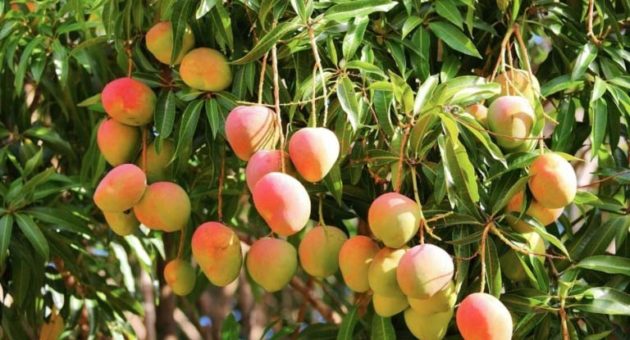
Mango is grown on 49,098 hectares producing 779,147 metric tonnes valued at Sh11.9 billion, and accounts for about 21 percent of the total value of fruits produced in Kenya/COURTESY
NAIROBI, Kenya, Jan 23 – Mango production in Makueni and Kitui Counties is expected to improve in quality and quantity, should the just launched pest free area campaign aimed at curbing fruit flies succeeds.
The campaign dubbed Komesha: Zuia Fruit Fly Ufaidike, will create a Pest Free Area by curbing the pests that have affected mango production in the region.
The campaign, which is sponsored by several players among them Makueni and Kitui governments, will sensitize farmers on economic benefits of applying modern pest management technologies to curb fruit fly damage on mango fruits.
Farmers will be given resources such as funding, training, and equipment to eliminate fruit flies. Youths will be employed as spray service providers to enrich the economic vitality of local communities.
Mango is currently the second most common fruit produced in Kenya, after banana.
According to Kenya Plant Health Inspectorate Service (KEPHIS), mango is grown on 49,098 hectares producing 779,147 metric tonnes valued at Sh11.9 billion, and accounts for about 21 percent of the total value of fruits produced in Kenya.
Makueni County is leading in mango production in Kenya with a total of 4,311,375 mango trees grown by 109,465 farmers, while Machakos County comes second with 506,544 mango trees cultivated by 17,676 farmers.
According to the Institution of Development and Management, 2010, the income from mango farming contributes about 40 percent of the farm household income in the region.
Despite mango’s potential contribution to economic and nutritional security for smallholder farmers, it has not been exploited due to challenges at various stages of the value chain.
“Our aim is to contribute to inclusive, market-driven, environmentally sustainable economic growth. Growing high quality products that meet European import standards may help open new markets and broaden market access for farmers,” said KEPHIS Managing Director Esther Kimani.
KEPHIS imposed an export ban to lucrative markets since fruit flies are classified as quarantine pests and Kenya was previously not able to meet the strict phytosanitary restrictions.
“The Feed the Future Kenya Crops and Dairy Market Systems Activity is supporting a comprehensive campaign to sensitize and train farmers on fruit fly control and create pest-free areas to address the fruit fly menace. This will create a fruit fly free zone that can begin capturing the lucrative European and US markets for mango,” said Tom Carr, the Chief of Party of the USAID funded Feed the Future Kenya Crops and Dairy Market Systems Activity at the media briefing.
Creating and monitoring Pest Free Areas and surrounding areas of Low Pest Prevalence are among measures being put in place by KEPHIS to address issues that led to a pre-emptive freeze on mango exports to European countries and USA.
The ban, which is expected to be lifted early next year, was affected in 2014 following high levels of fruit fly that saw Kenyan consignments intercepted on several occasions. A pre-emptive freeze is always a precautionary measure to stop introduction of pests to importing countries.
The campaign, which will last for two years, is expected to lead to increased export market share for mangoes by 30 percent in the first year by addressing the market compliance.


































